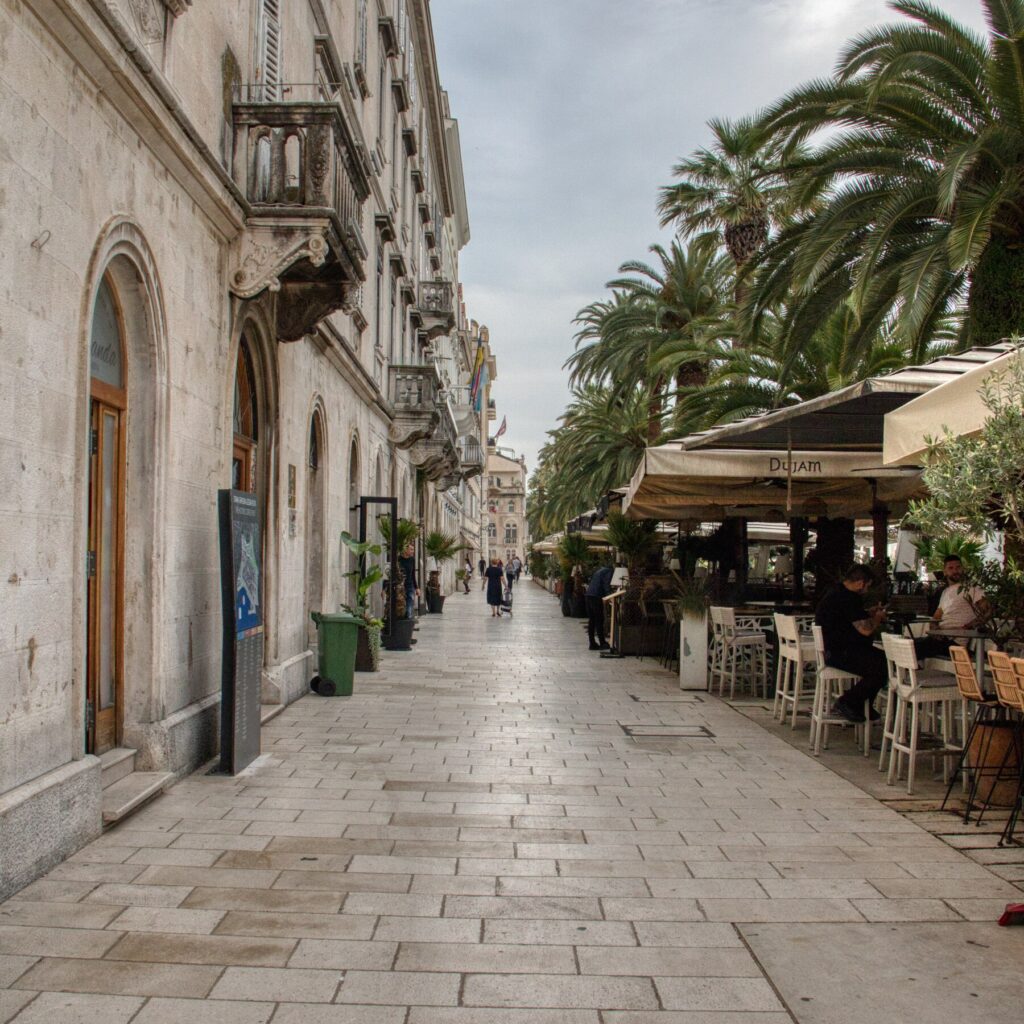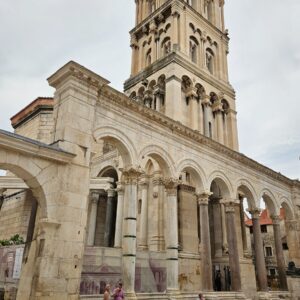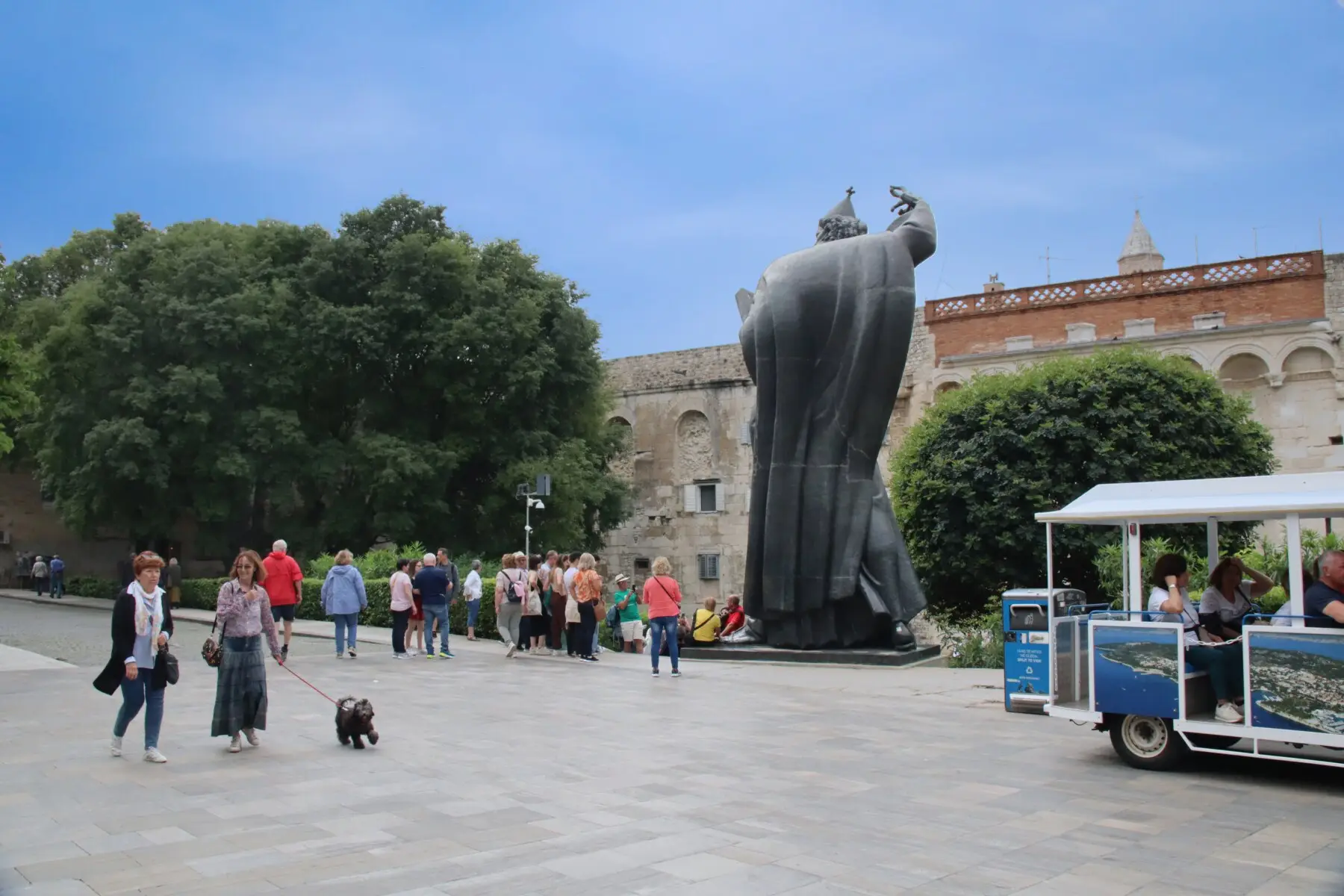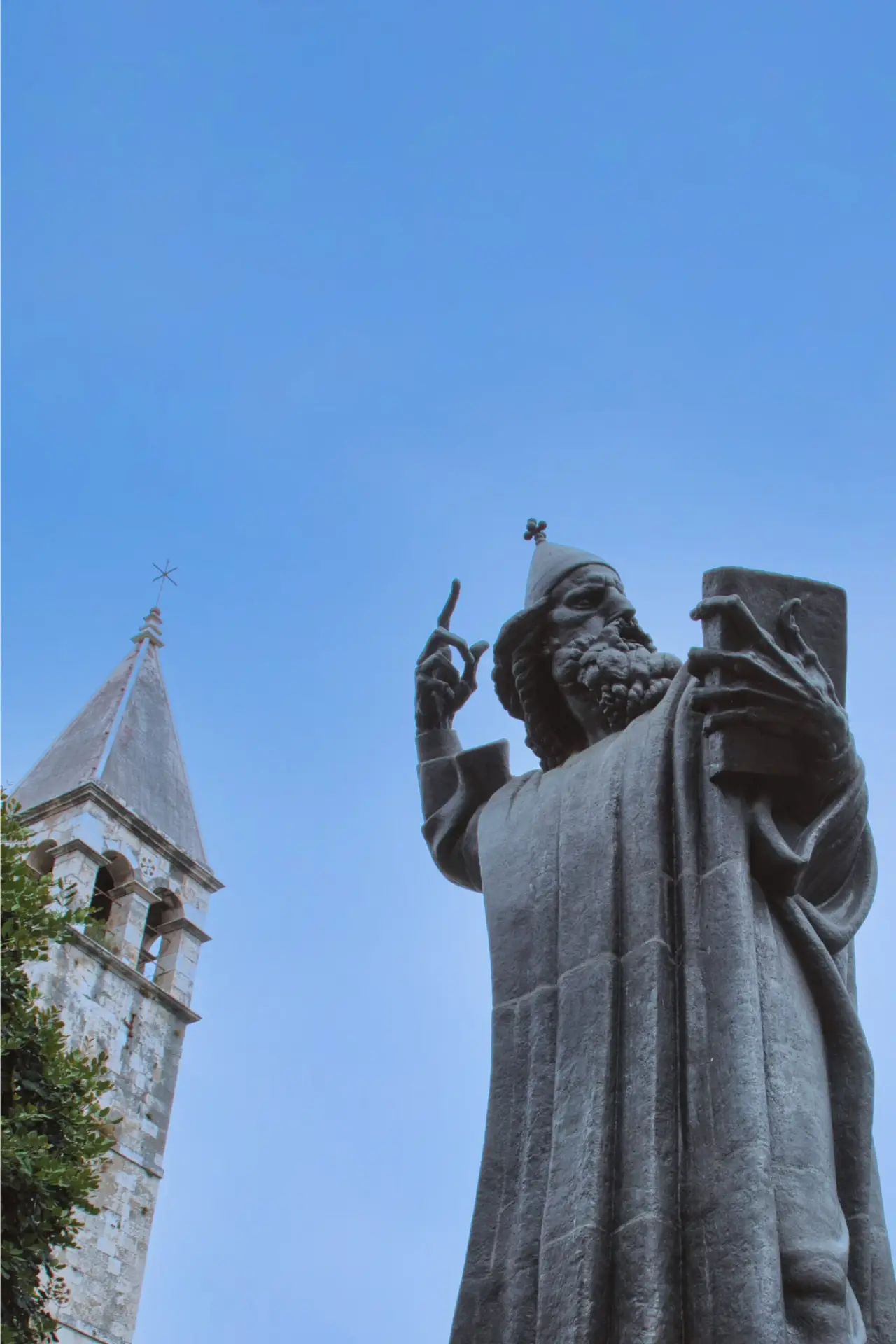How to spend one day in Split, Croatia
Split, once a mere stopover for tourists, has undergone a remarkable transformation. It has emerged as a vibrant tourist destination and is now one of Croatia’s most sought-after destinations. It is situated amid the Dalmatian Coast.
Split is a perfect base for exploring Croatia and is a crucial transport hub and port city. Located on the eastern coast of the Adriatic Sea, Split boasts mesmerizing views and stunning landscapes.
It is also famous for its beaches and ancient Roman ruins, notably Diocletian’s Palace, located in the heart of the Old Town.
Exploring the many treasures inside the palace is one of the most popular activities.
Split is a treasure trove of attractions, from its rich history to the Game of Thrones landmarks. Each discovery will add a new layer of excitement to your visit.
This typical Mediterranean city exudes a small-town charm, with bustling streets and friendly locals.
Visiting Split under five hours
 We arrived at our first stop during our cruise vacation and docked at 8 a.m.
We arrived at our first stop during our cruise vacation and docked at 8 a.m.
However, nothing onshore opened before 9-10 a.m., so we had to return to the ship by 2 p.m. Fortunately, the market opened at 6:30 a.m.
It took us 15-20 minutes to walk from the ship to the city center.
We then stopped at the Tourist Information Center to get a city map. The girl there was amiable and helpful.
When visiting the charming city of Split, Croatia, you can experience several worthwhile attractions and activities in just under five hours.
Split has a rich history dating back to the Roman Empire, which is reflected in the numerous culturally rich sites you can explore during your visit. One such popular attraction is Diocletian’s Palace, an ancient palace built by the Roman emperor Diocletian himself and now a UNESCO World Heritage site.
Other must-visit places include the Cathedral of Saint Domnius, the ancient city walls, and the Riva waterfront promenade. You can also experience the local culture and way of life by strolling through the bustling markets in the Old Town area, sampling delicious seafood and local wines at one of the many restaurants, or simply soaking up the sun on the nearby beaches.
Whatever you choose to do, Split is sure to delight all of your senses in under five hours.



Table of Contents
Things to See In Split
1-The Green Market
As we headed towards Split’s city center, we stumbled upon the “green market.” This vibrant outdoor market is a great way to immerse yourself in local life.
You can find a wide array of fresh produce, including herbs, cheeses, meats, honey, and various Croatian delicacies that pique your interest. The market is a feast for the senses with its vibrant colours, alluring aromas, and rich flavours.
But the market isn’t just about food. It’s also a treasure trove of artisanal stalls offering unique souvenirs and trinkets. And the best part? We found some high-quality linen clothes at a steal, making us feel financially savvy.
2-The Old Town - The People's Square Or The Fruit Square



To truly experience the old city, I recommend exploring on foot for at least a few hours. Start at Pjaca Square, where the old town hall overlooks a sophisticated plaza with shiny marble tiles and outdoor cafes.
Fruit Square, another essential stop, derives its name from the bustling market that once graced its grounds centuries ago. The abundance of beautiful Renaissance architecture here is a poignant reminder of Split’s Venetian era, enriching your historical understanding of the city.
The splendid Baroque architecture of Fruit Square’s buildings elevates it to one of the most breathtaking squares in the city and the entire region, leaving visitors in awe of its beauty.
Fruit Square got its nickname because people from the surrounding villages used to sell their fruit and vegetables there. Although there are no more stalls, you can still enjoy a refreshing fruit salad or a delicious smoothie made with fresh local produce, such as figs, oranges, and strawberries.
The People’s Square, also known as Pjaca, is a buzzing central spot filled with places to rest, meet, and eat. A Romanesque clock, symbolizing the city’s rich history, overlooks the square, which also features charming cafeterias.
In front of the palace, you will find a statue of Marko Marulić, a 15th-century poet. The statue, created by Ivan Mestrovic, stands in the Fruit Square. Marulić was a Croatian national poet and Renaissance humanist. It is an image of preserved Croatia.
3-Split Ethnographic Museum






The historic Town Hall, a Gothic masterpiece, has been transformed into the Ethnographic Museum. As the oldest museum in Croatia, it holds a significant place in Split’s history, making it a must-visit for history enthusiasts and cultural explorers.
Situated inside the old palace, this museum is one of the most important and frequently visited in Split. It is conveniently located in the heart of the city, making it easily accessible for tourists. The collection of cultural and museum activities is associated with the Papalic palace, which houses the Museum of the City of Split.
The Ethnographic Museum is a treasure trove of cultural artifacts from the Dalmatia region and beyond. Its valuable collections of folk costumes, jewelry, weapons, household items, and traditional handicrafts testify to the area’s rich cultural heritage. The embroidered costumes are displayed in reconstructed rooms of typical peasant houses, adding a touch of authenticity to the experience.
You can take advantage of the collection of medieval weaponry and spend some time exploring the dining room on the first floor, which is furnished just as it was in the past. This museum is worth a thorough visit.
**Museum 3 euros entrance
4-Peristil Square/Diocletian’s Palace/St. Duje's Cathedral





The architecture in old Split is truly enchanting. It’s fascinating to see how the ancient buildings have been repurposed. The most notable example is Split’s cathedral, originally Diocletian’s mausoleum. The central part of this structure dates back to 350 AD, making St. Duje’s the oldest cathedral building in the world.
Additionally, check out the cathedral’s Romanesque wooden doors, which have remained unaltered since 1200.
The construction of the bell tower began in the first half of the 13th century and stands at a height of 60 meters. Be cautious of the slippery stone steps and low ceilings when climbing the bell tower. To make the most of your visit, start with the treasury, where you’ll find abundant information spread across three floors.
Although this church, dating back to the fourth century, is smaller than other cathedrals, it is a remarkable architectural wonder in its own right.
It’s a fascinating place! It’s worth a visit, although I think it’s a bit overpriced at €15. The things you can see for free are just as impressive and exciting as the parts you must pay for.
***Just a heads up: the Cathedral and the bell tower close around 7 p.m. Also, be careful when climbing the bell tower, as the stone steps tend to be rather slippery, and the ceiling is relatively low.
It would be best if you caught them. These three places are located in the same area.
DiocletPalacePalace is a unique and well-preserved 4th-century complex that combines Diocletian’s retirement villa with remnants of a large military camp.
Palace Palace is so grand that it feels more like a citadel than a palace. You’ll find surprises around every corner, and you can even walk on the original Roman streets still paved with their original stones. Palace Palace is a UNESCO-listed site and a popular location for filming movies and TV shows, such as Game of Thrones.
Peristil Square is a historic Roman court with impressive ancient architecture. Its excellent acoustics make it a perfect venue for theatre or opera performances during summer. Diocletian brought two 3,500-year-old Egyptian sphinxes to the city.
The Peristyle is a spacious square connecting the city’s northern and southern parts. It’s an excellent example of how the palace was converted. The ancient pillars have facades of Romanesque, Gothic, Renaissance, and Baroque buildings and palaces embedded inside them.
A former octagonal imperial mausoleum has been turned into a cathedral, and it now has a Romanesque bell tower.
Old Split is also worth exploring. It’s a beautiful medieval walled city with narrow streets and surprises around every corner.
5-Statue of Grgur Ninski




Upon exiting the Golden Gate of the old city, you will come across an impressive and significant statue of Grgur Ninski, a 10th-century bishop who conducted religious services in the Croatian language, thereby defying the authority of the pope.
Visitors to the statue often rub Ninski’s big toe for good luck!
If you’re interested in taking a picture with soldiers, they will happily take any spare change you have and snap a photo with you – it’s a fun experience. I never did that before, lol…
6-Exploring outside the gate
After leaving the city gate and passing the Grgur Ninski Statue, you will find shops and a restaurant. This area is also home to several shops, a park, and restaurants, offering visitors a unique perspective of Split.
While exploring, we stumbled upon a restaurant named “Gallery” that served excellent food at a reasonable price (12.20 euros for two people).
It was a beautiful day with a mix of sun, clouds, and a temperature between 20-22°C. Despite the stormy clouds, the day was lovely. We enjoy this lovely place.







Croatia is on my list to go to when my kids r a bit bigger. I love the the national park and I would love to do watersports there.
Sure Croatia is beautifull.
Love the photography. The review of Split was fascinating! 👍
Thank you
Croatia is on my bucket list. Hopefully (soon) when I plan a trip there – I’ll be sure to add Split to my itinerary.
I hope you can visit Slpit ,it is very beautiful
I’ve always wanted to go to Croatia and I’ll definitely have to check Split out! Thank you for this great guide, the architecture and sites look incredible!
Slpit is amazing, so much to see.
What an excellent description and review of Split!
Thank you:O)